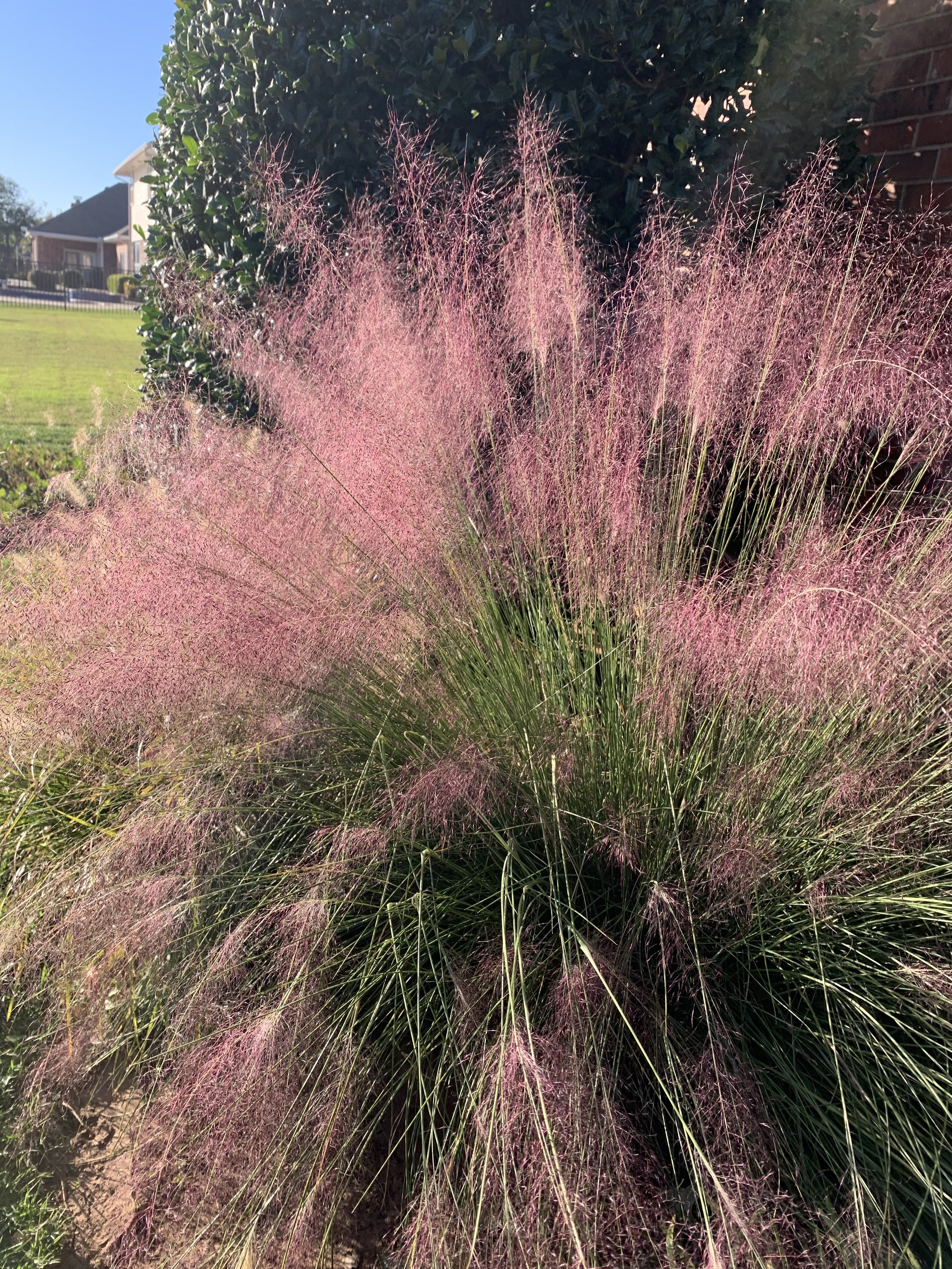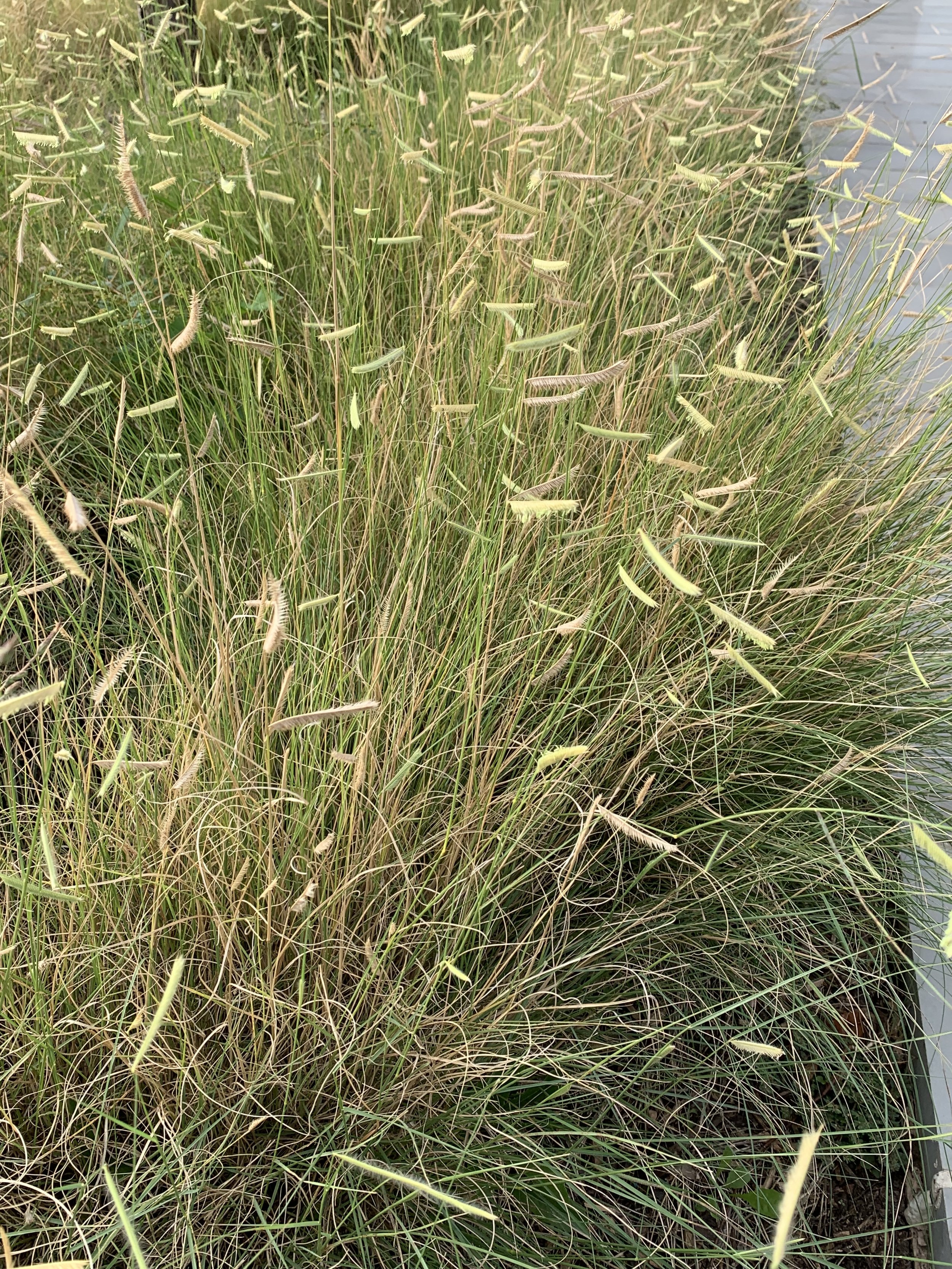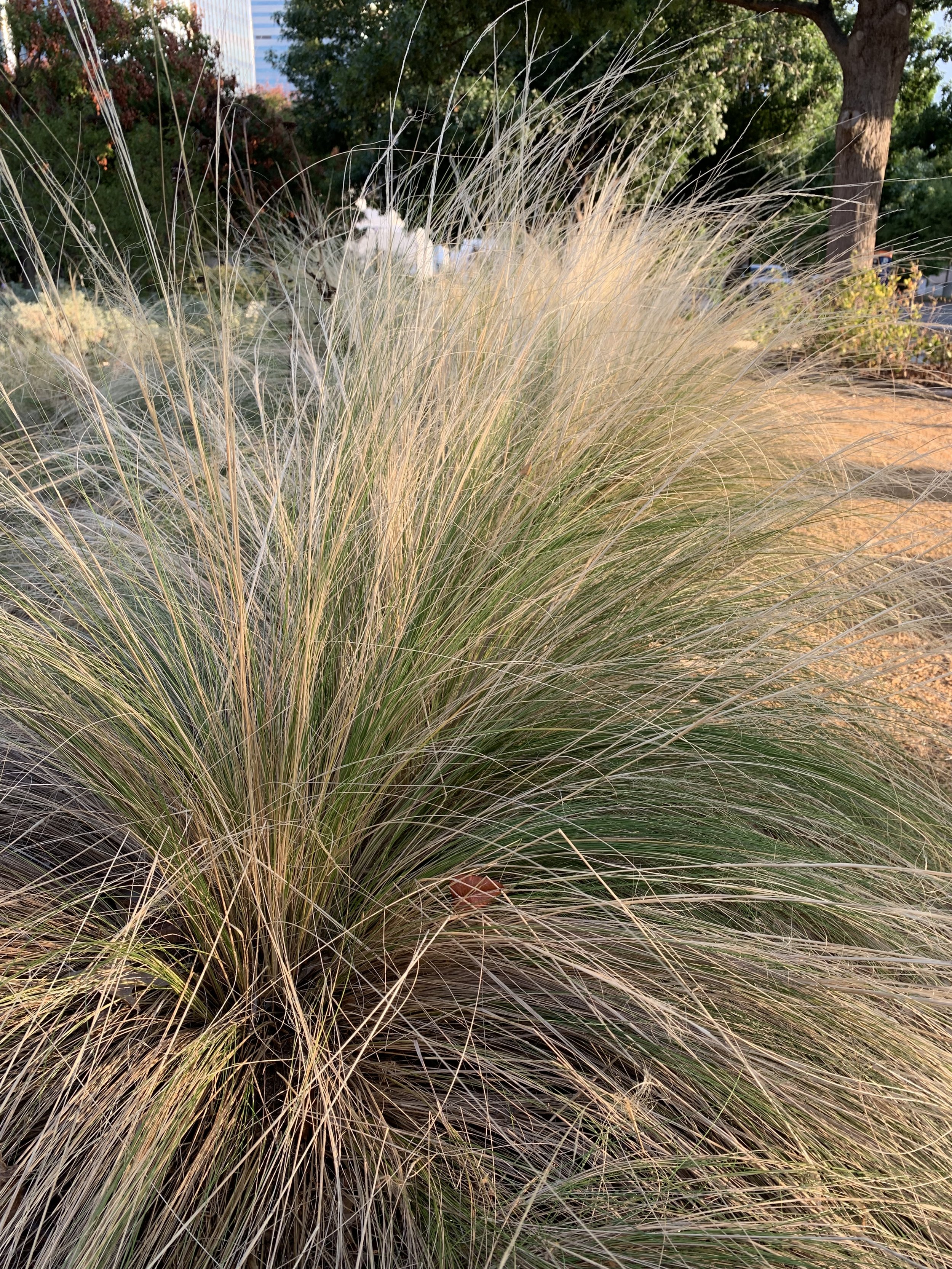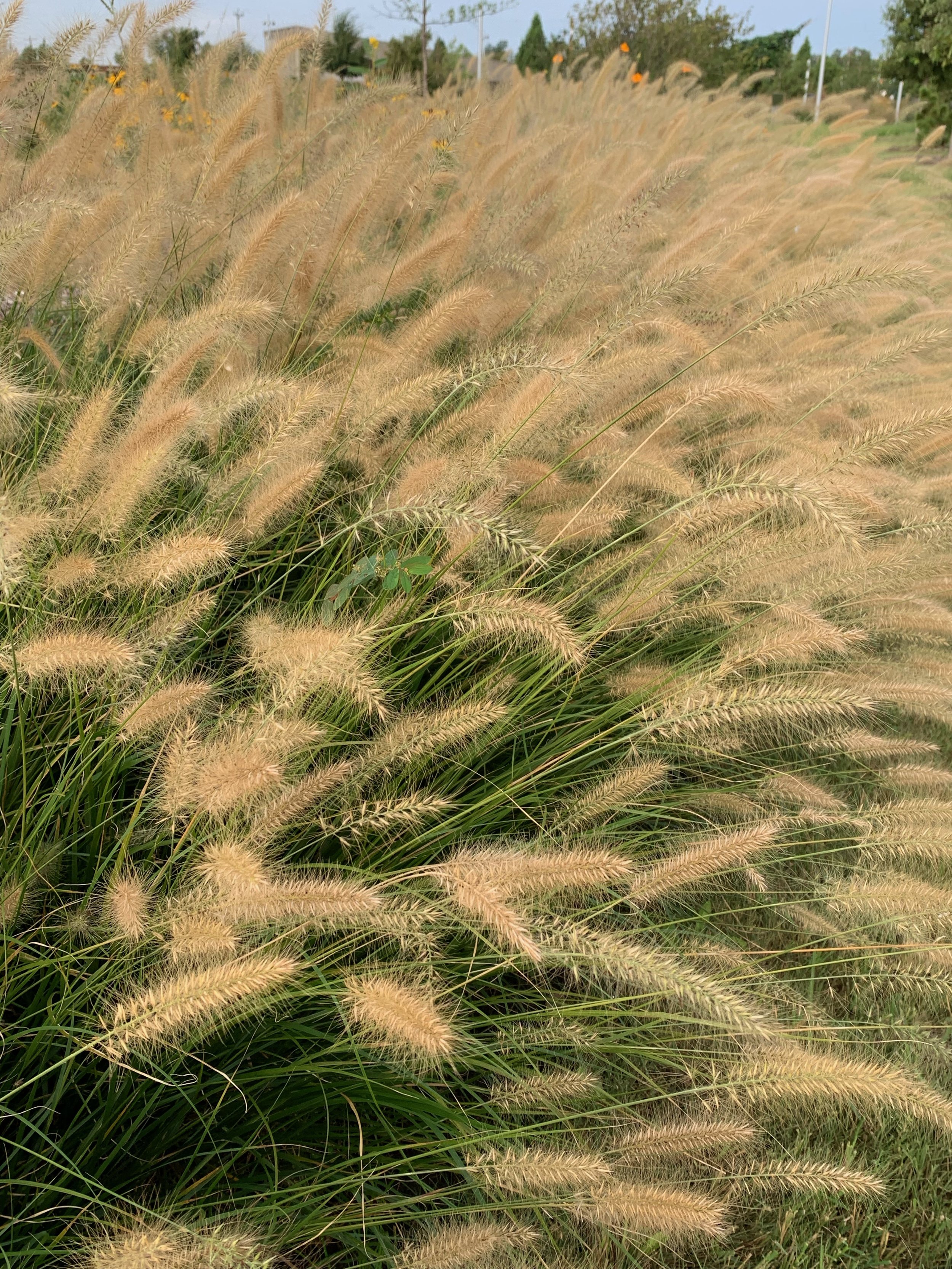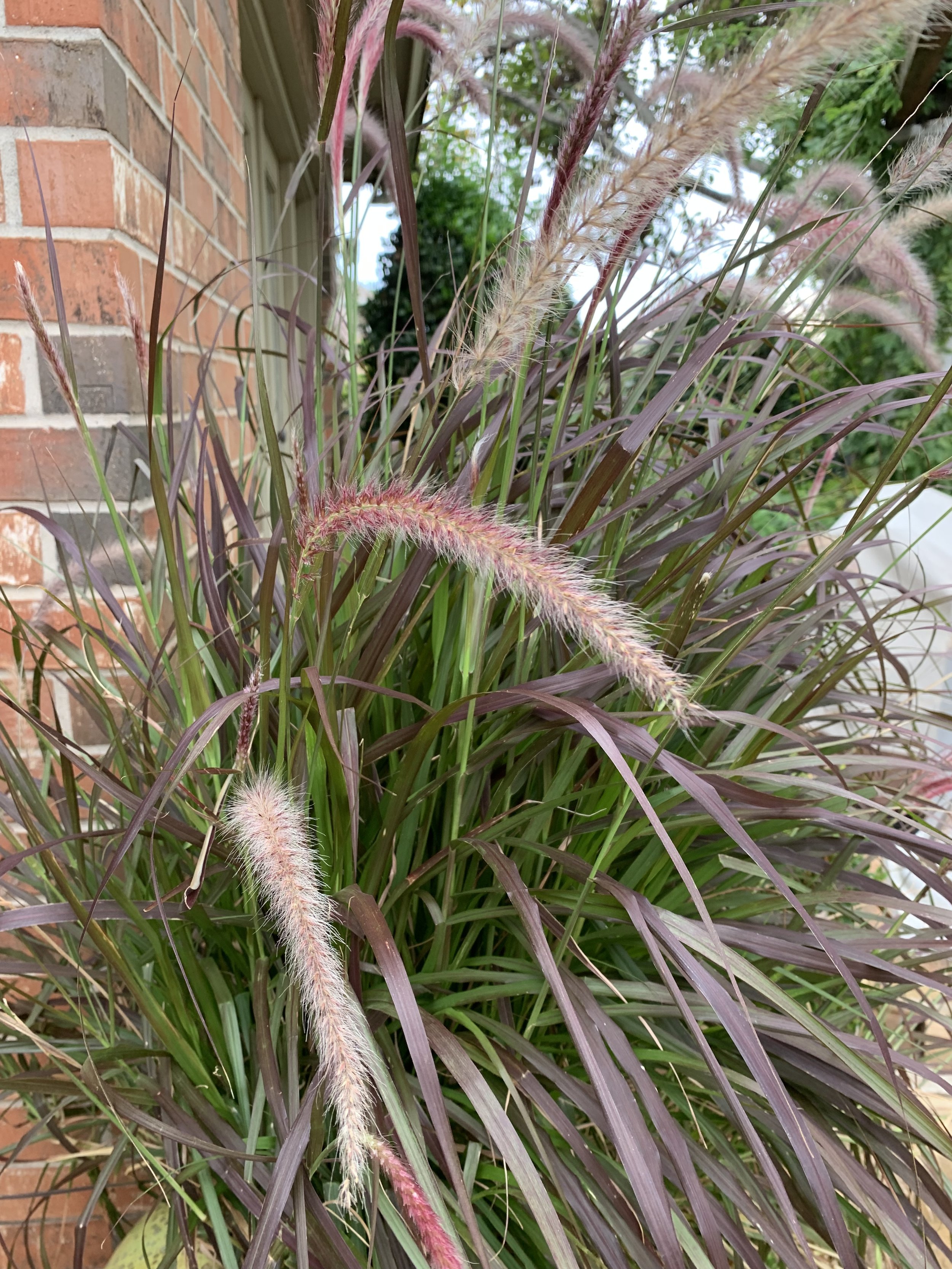Ornamental Grasses... adding interest to your late summer & fall landscape!
As the landscape transitions from summer to fall a common plant in the most dramatic landscapes will be ornamental grasses. As many plants begin to fade, many varieties of ornamental grasses fill the void with dramatic plumes. But, the interest they add to the landscape doesn’t end this fall. Ornamental grasses add texture to the winter landscape as their leaves and plumes rustle in the wind. As the landscape emerges from winter new growth appears from the freshly cut back grasses gradually reaching the perfect height for summer breezes to add movement to the landscape.
What is an ornamental grass?
Ornamental grasses come in two forms: medium to large upright grasses and groundcovers. Simply, they are any grass used in the landscape as a plant instead of as turf.
The ways to use ornamental grasses in your landscape are nearly endless:
They can be used as a single specimen plant to add color and texture to the landscape year-round,
They can be used as a screen to hide undesirable objects or views,
They make great landscape borders,
They can be planted in small groupings to a splash of texture and color to a bed, and
They can create a field of interest when mass planted.
Most ornamental grasses are very adaptable to heat, drought, and humidity. They also grow in most soils.
There are both cool season and warm season ornamental grasses. Cool or warm season refers to the time of the season they bloom. The cool season grasses start growing earlier in the spring and look stunning in early summer. But, warm-season grasses emerge later in the spring and add interest to the landscape as they flower in late summer to fall.
Ornamental grasses require little maintenance, needing attention only once per year. Grasses do best when their dormant top is removed in early spring before new leaf blades emerge. For upright grasses, cut them back to 12-18” while liriope growing as a ground cover needs to be cut back to 2-3”.
Tools and tips for your once-per-year ornamental grass maintenance:
For upright grasses use either hand shears or power hedge trimmers. Tying up the foliage with twine before you make the cut will make clean-up a lot quicker.
For liriope, a string trimmer makes the job quick and easy. Or, if you have a large area, set your mower in the highest setting, and simply mow over the liriope.
Every 3-5 years it is a good idea to divide grasses in the spring after you have cut them back. Use a sharp shovel to slice through the clump dividing it into 2 or 3 clumps adding the clumps to other areas of your landscape or to give to friends. Liriope can also be transplanted after cutting back in the spring by simply digging up clumps and replanting.
Dividing and transplanting ornamental grasses is an inexpensive way to expand your landscape.
Pink Muhly Grass has an attractive thin leaf blade during the growing season that burst with pink-purple soft plumes in late September to early October.
There are too many varieties of ornamental grasses to cover them all, but here are just a few favorites:
Pink Muhly Grass – Pinkish-purple lacy plumes in the late summer to fall. As a warm season grass it is often one of the last to start to grow in the spring and one of the later bloomers. Pink Muhly grows in full sun to partial shade and reaches 3-4’ in height.
Pink Muhly Grass has an attractive thin leaf blade during the growing season that burst with pink-purple soft plumes in late September to early October.
Pink Muhly Grass
Maiden Grass – Slender blades with creamy white to shimmering silver small plumes. 5-6’ tall. Plant in partial to full sun.
Maiden Grass creates a wonderful statement with its shimmer plumes when planted as a focal point. There are several varieties of Maiden Grass, I’m sure there is one just right for your landscape.
Blue Grama Grass – Native grass with golden summer flower on stiff stems. Great for adding texture to the landscape. Plant in full to partial shade. Once established this grass does not require much water. Grows about 3’ tall.
Blonde Ambition Blue Grama Grass is a great choice for a low maintenance mass planting.
Little Bluestem – Blue to pink to burgundy hues in the late summer and rich copper tones in the fall. Requires full sun. A native grass that is loved by birds. Grows 3-4’ tall.
Little Bluestem adds a rich copper tone to the fall landscape.
Switch Grass – An Oklahoma Proven perennial grass that grows in full sun to partial shade. It has lacy sprays with a purplish cast in the fall. There are several cultivars and great used as a single accent or in groups. Reaches 6’.
Switch Grass is known for lacy small plumes that grace its purple leaf blades in the fall.
Mexican Feather Grass – Another Oklahoma Proven grass with a feather like, graceful fine texture and silver flowers. Best grown in a grouping in full sun to partial shade. It prefers well drained soil and is very drought tolerant once established. Different from most grasses in that it prefers to not be cut back in the spring. Only grows 2-3’.
Mexican Feather Grass planted in groupings create a feather like feeling as they sway in the breeze.
All Gold Japanese Forest Grass – Best planted in shade to partial shade, the light green color is a great accent to dark green shrubs in a shade garden. Grows 1-2’ with a cascading habit. Requires rich, loamy soil and does not do well in tight, clay soils.
Karl Foerster Feather Reed Grass – One of the most common cool season grasses with reddish bronze plumes in early to mid-summer. Grows 4-6’ tall in full to partial sun.
There are many varieties of Fountain Grasses. A favorite Dwarf Fountain Grass is ‘Hameln’. It has rich green foliage in the summer that turns a golden color in the fall with buff colored plumes in the late summer and fall.
Fountain Grass – Graceful arching shaped grass that will reach 5’ with tuffs of green seed heads on rich green grass blades. Little Bunny, a dwarf variety, only reaches 1-2’. Little Bunny is great for borders and smaller landscapes. Grows in full to partial sun.
Zebra Grass – A great accent grass with bands of yellow on green foliage. Grows 4-5’ tall in full to partial sun.
Purple Fountain Grass – An annual ornamental grass (does not come back next season) with rich dark purple color. It reaches 3-4’ tall and looks great planted as a single accent plant with yellow or pink summer annual flowers.
Purple Fountain Grass is an annual ornamental grass (only lasts one season) that you can always count on for brilliant purple leaf blades and plumes even in the hottest of summers.
Blue Fescue – A small silvery-blue grass that makes a great boarder or mass planting. Prefers well drained soil in full sun. Only reaches 12”.
Blue Fescue is a small blueish gray grass that is great used with seasonal color plantings or planted in a mass.
Dwarf Pampas Grass – Don’t let “dwarf” fool you, this grass reaches 4-5’. One of the most common ornamental grasses with large, showy white plumes in late summer. Giant Pampas Grass can reach 10’ and best used as a screen in large landscapes.
Dwarf Pampas Grass adds a big splash to the late summer and fall landscape with large showy plumes. Don’t be fooled by the ‘dwarf’. They will reach 4-5’ and make a great screening plant.
Often over looked as an ornamental grass, Liriope is a one time per year maintenance ground cover, you simply mow it short early in the spring and then just let go for the rest of the season. Oh, there are many varieties, but the ones with big blueish to purple flower spikes in the late summer are my favorites.
Both the Myriad Gardens and Scissortail Park are full of ornamental grasses and most are labeled. Go for a walk in both of our downtown parks over the next few weeks and pick out a favorite grass to add to your landscape.
A good source for more information on ornamental grasses:
Landscape Design with Ornamental Grasses: Top 5 ways (monrovia.com)
Do you have a favorite ornamental grass? (If you don’t, you should.)
Lorne Hall
Hall | Stewart Lawn + Landscape
(405)367-3873






